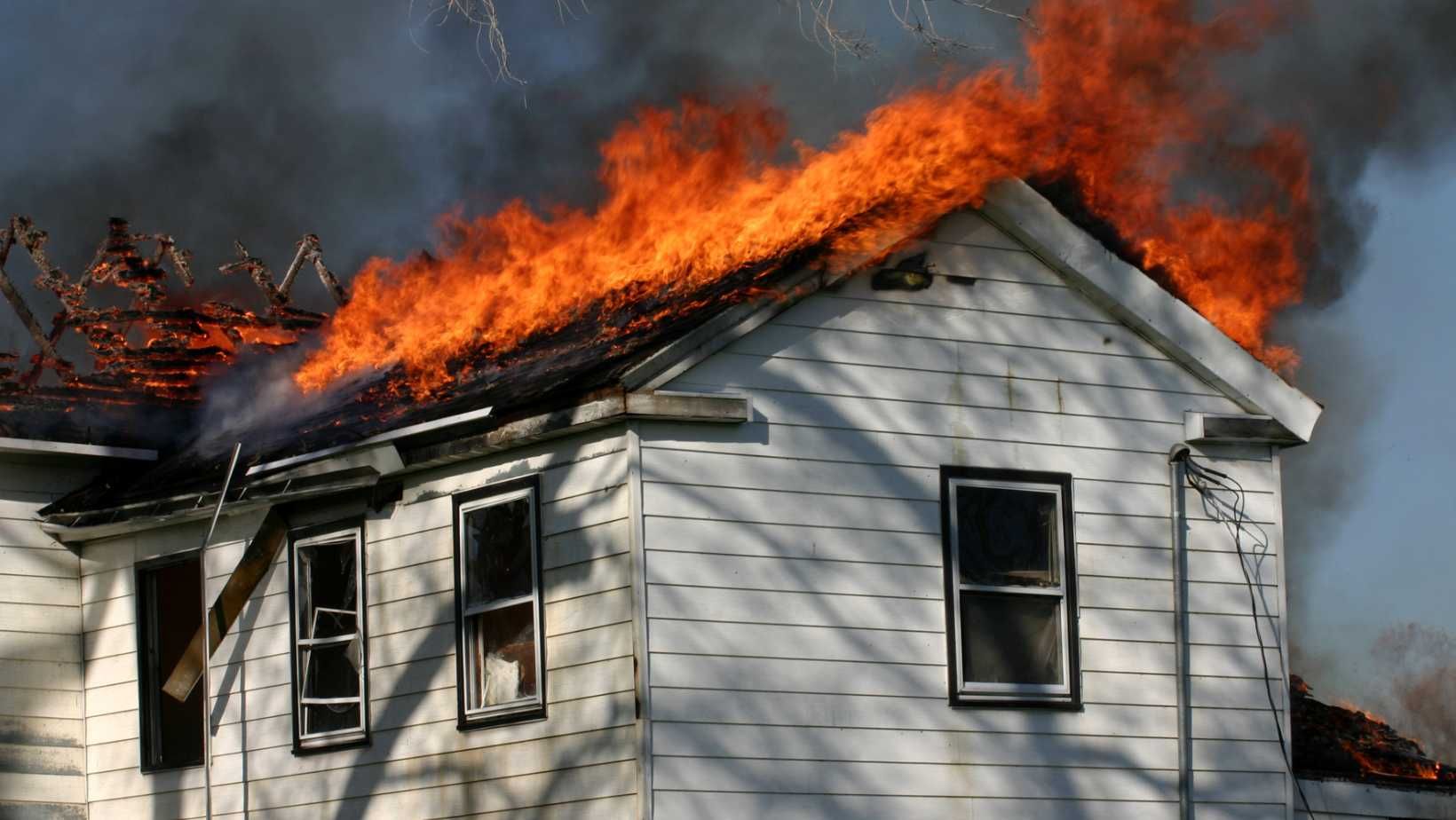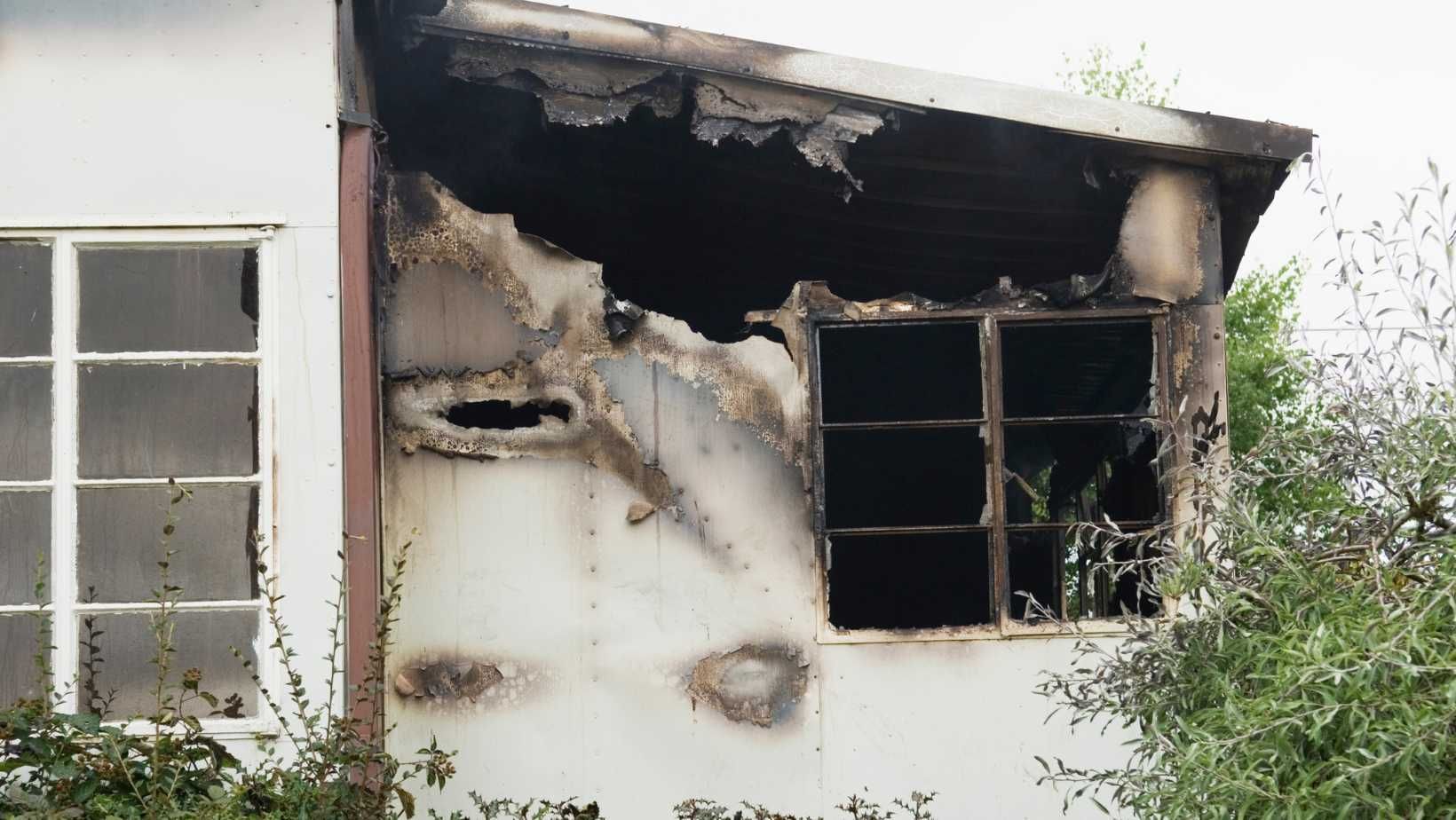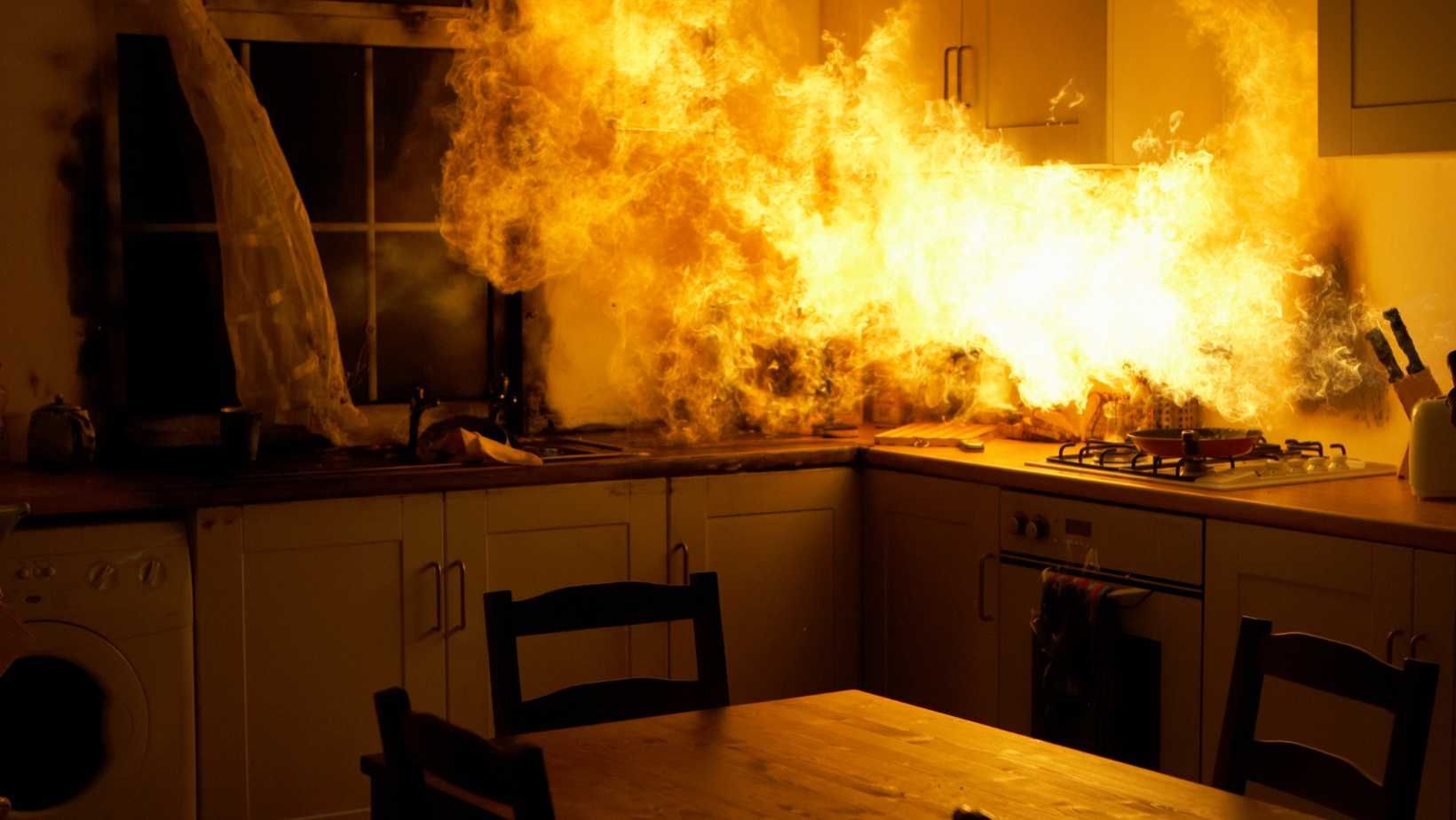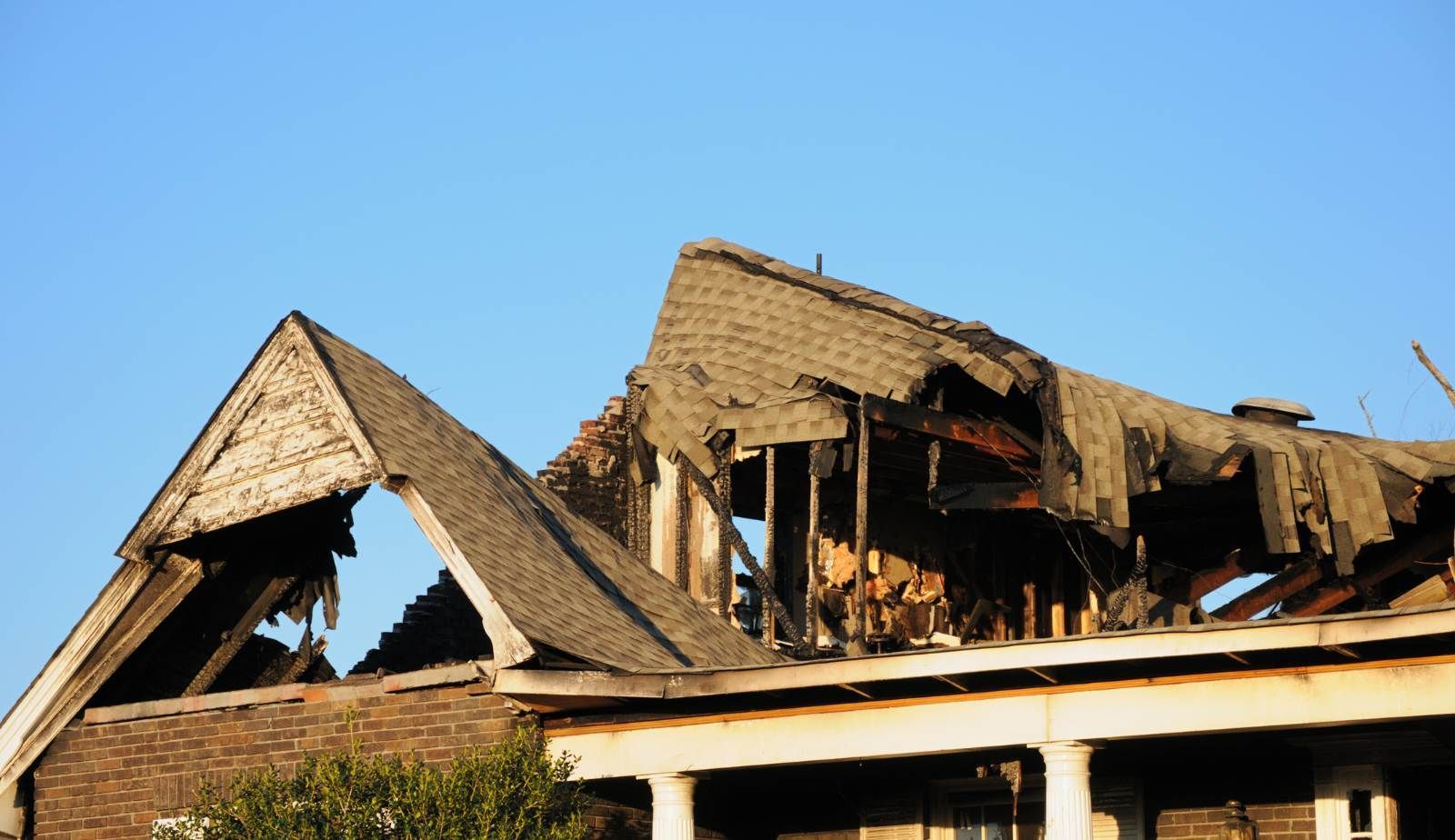Ensuring Financial Safety: The Vital Role of Insurance in Fire Damage Recovery
This article explores the importance of insurance coverage in protecting property owners from the financial losses of fire damage, the steps involved in filing an insurance claim, common challenges faced during the recovery process, the role of professional restoration services, and recommendations for homeowners dealing with insurance claims after a disaster.

The Role of Insurance in Fire Damage Recovery
Fire damage incidents can have devastating effects on property owners, leading to significant financial losses and emotional distress. In such challenging times, having insurance coverage is paramount to provide a safety net for individuals and businesses affected by fire-related damages. For instance, imagine a scenario where a residential property suffers extensive fire damage, resulting in structural impairments and loss of personal belongings. Without insurance coverage, the property owner would bear the full financial burden of repairs, restoration, and replacement costs, which could be financially crippling. Therefore, insurance plays a crucial role in mitigating the financial impact of fire damage incidents and facilitating the recovery process for property owners.
The importance of insurance coverage for fire damage extends beyond financial protection; it also offers peace of mind to property owners by ensuring that they have the necessary support to navigate the challenges of post-fire recovery. By understanding the coverage provided by fire damage insurance, property owners can make informed decisions to safeguard their properties and assets in the event of a fire emergency. Additionally, insurance coverage expedites the recovery process by providing timely access to funds for restoration efforts, allowing property owners to initiate repairs promptly and rebuild their lives after a fire incident.
Insurance coverage plays a vital role in post-fire recovery in specific regions like Louisiana. Louisiana residents rely on fire damage insurance to secure their properties and assets against fire-related risks, ensuring comprehensive protection and financial security in the face of unforeseen fire incidents. By understanding the coverage provided by fire damage insurance for Louisiana residents, individuals can proactively prepare for potential fire disasters and mitigate the financial impact of such events. Professional restoration services like DryMax Water Fire Mold further complement the role of insurance by offering specialized expertise in fire damage cleanup and structural repairs, enhancing the overall recovery process for property owners in Louisiana.
Importance of Insurance Coverage for Fire Damage
Insurance coverage for fire damage is essential for property owners as it encompasses protection for various aspects, including structural damage, personal belongings, and additional living expenses. For example, in the aftermath of a fire incident, insurance policies can provide financial support for repairing structural impairments, replacing damaged items, and covering temporary accommodations while the property is being restored. This comprehensive coverage ensures that property owners can recover from fire damage incidents without facing insurmountable financial challenges. Moreover, insurance coverage offers a sense of security and stability to property owners by providing a safety net against the uncertainties of fire-related damages.
In the absence of insurance coverage, property owners may struggle to fund the extensive repairs and restoration required after fire incidents, leading to delays in the recovery process. For instance, without insurance, a homeowner whose property is damaged by a fire might face difficulties in covering the costs of rebuilding and replacing lost belongings. This underscores the critical importance of having adequate insurance coverage to mitigate the financial burden and facilitate the restoration of properties post-fire incidents. By investing in insurance protection, property owners can safeguard their assets and ensure a more streamlined recovery process in the event of fire damage.
Having adequate insurance coverage can expedite the recovery process by ensuring timely access to necessary funds for restoration efforts. In the event of a fire, property owners can rely on their insurance policies to provide the financial support needed to commence repairs and rebuild their properties promptly. This timely access to funds can significantly impact the speed and efficiency of the recovery process, allowing property owners to restore their homes and businesses without prolonged delays. Therefore, insurance coverage not only offers financial security but also facilitates a smoother and more efficient recovery journey for property owners affected by fire damage incidents.

Steps Involved in Filing an Insurance Claim for Fire Damage
Property owners must follow specific steps when filing an insurance claim for fire damage to ensure a smooth and successful claims process. The initial and crucial step is to report the fire incident to the insurance company promptly, initiating the claims process. By promptly notifying the insurance provider, property owners can expedite the assessment of damages and access the necessary support for restoration efforts. For example, if a homeowner experiences a fire in their residence, contacting the insurance company without delay sets in motion the procedures for assessing the extent of the damage and determining the coverage available under the policy.
Documenting the damage with detailed descriptions, photos, and videos is essential for supporting the insurance claim and evaluating the full scope of the loss. For instance, property owners should meticulously document the affected areas, damaged belongings, and structural impairments caused by the fire. By providing visual evidence of the damages, property owners strengthen their claims and facilitate a comprehensive review by insurance adjusters to determine the appropriate coverage and financial assistance required for restoration. Additionally, detailed documentation ensures transparency and accuracy in the claims process, reducing the likelihood of disputes and expediting the approval of claims.
Insurance adjusters play a crucial role in assessing the damages, reviewing policy details, and estimating the costs of repairs during the claims process. These professionals analyze the documented evidence of the fire damage, evaluate the coverage under the policy, and provide estimates for the restoration work required. By collaborating with insurance adjusters, property owners can gain insights into the scope of coverage available, understand the terms of their policies, and navigate the claims process effectively to secure the necessary funds for restoration efforts. The expertise and guidance of insurance adjusters are instrumental in ensuring that property owners receive fair and accurate compensation for the damages incurred during fire incidents.
Common Challenges Faced During the Fire Damage Recovery Process
The fire damage recovery process presents various challenges for property owners, ranging from insurance claim disputes to emotional distress post-fire incidents. One common challenge is the disputes that may arise during the insurance claims process, leading to delays and potential underestimation of damages by adjusters. For example, disagreements over the extent of the damage or the value of lost items can prolong the claims process and hinder the timely approval of claims. Property owners must navigate these disputes effectively to ensure fair compensation and expedite the restoration of their properties.
Coordinating multiple contractors for restoration work and navigating complex insurance policies are additional challenges faced by property owners during the fire damage recovery process. In cases where insurance may not cover all fire losses, property owners may need the assistance of a fire damage attorney to ensure full compensation. For larger properties or commercial buildings, managing various contractors for debris removal, structural repairs, and content cleaning can be a logistical challenge. Property owners must effectively coordinate and communicate with these contractors to ensure the seamless execution of restoration tasks and the timely completion of the recovery process. Moreover, understanding and complying with insurance requirements, meeting documentation deadlines, and negotiating fair settlements with insurance companies are key hurdles that property owners must overcome to facilitate a successful recovery from fire damage incidents.
Ensuring compliance with insurance requirements, meeting deadlines for documentation submission, and negotiating fair settlements with the insurance company are key hurdles in the fire damage recovery process. For instance, property owners must adhere to the terms and conditions of their insurance policies, provide the necessary documentation in a timely manner, and engage in effective communication with the insurance company to facilitate the claims process. By proactively addressing these challenges and staying informed about their rights and obligations under the policy, property owners can navigate the complexities of fire damage recovery more effectively and secure the support needed for successful restoration efforts.

Role of Professional Restoration Services in Fire Damage Recovery
Professional restoration services play a vital role in fire damage recovery by offering specialized expertise and comprehensive solutions to property owners in need. These services encompass a range of offerings, including fire damage cleanup, smoke odor removal, and structural repairs to restore properties to their pre-fire condition [5]. For example, in the aftermath of a fire incident, restoration companies utilize advanced equipment and techniques to efficiently clean up fire-damaged areas, remove smoke odors, and repair structural impairments. This specialized expertise ensures thorough restoration and minimizes the risk of secondary damages such as mold growth, enhancing the overall recovery process for property owners.
In addition to cleanup and repair services, restoration companies provide a holistic approach to fire damage recovery by offering debris removal, content cleaning, and reconstruction services. Property owners can benefit from the comprehensive support provided by these professionals, who guide them through each step of the restoration journey and ensure that all aspects of the recovery process are addressed effectively. By entrusting the restoration work to experienced professionals, property owners can expedite the recovery process, minimize the risks of further damage, and restore their properties to safe and habitable conditions post-fire incidents. The expertise and efficiency of restoration services are instrumental in facilitating a successful recovery and ensuring that property owners can resume their normal lives after fire damage incidents.
Moreover, restoration services offer reassurance and peace of mind to property owners during the challenging process of fire damage recovery. Dealing with the aftermath of a fire can be emotionally draining, and the support of restoration professionals can alleviate some of the stress and uncertainty faced by property owners. By engaging with these experts, property owners can rely on their knowledge and experience to navigate the complexities of fire damage recovery, make informed decisions about restoration efforts, and ensure that their properties are restored to a safe and secure state. The comprehensive services provided by restoration companies contribute significantly to the successful recovery of properties from fire damage incidents, offering property owners a reliable partner in the restoration journey.
Fire Damage Legal Liability Coverage
Fire damage legal liability coverage is a critical component of insurance protection for tenants and businesses, offering financial security against legal claims and settlements arising from fire-related damages. For example, in the event of a fire damaging a rented property, tenants may be held liable for the damages incurred during their tenancy. Legal liability coverage provides tenants with financial protection against potential legal costs, liability settlements, and property damage claims, ensuring that they are safeguarded in case of fire incidents. Understanding the coverage limits, exclusions, and legal requirements of fire damage liability insurance is essential for tenants to maximize their protection and mitigate the financial risks associated with legal claims.
Similarly, for businesses, fire damage legal liability coverage can mitigate the financial impact of property damage claims and legal proceedings resulting from fire incidents. In scenarios where a business property sustains fire damage, legal liability coverage can cover legal defense costs, liability settlements, and property damage claims, enabling the business to recover and resume operations swiftly. Factors such as property type, coverage limits, and fire safety measures can influence the premiums and coverage costs of fire damage legal liability insurance, underscoring the importance of understanding the nuances of the coverage for effective protection. By investing in comprehensive legal liability coverage, tenants and businesses can secure financial stability and peace of mind in the face of fire-related incidents, safeguarding their assets and interests against potential legal risks.
Understanding coverage limits, exclusions, and legal requirements of fire damage liability insurance is crucial for both tenants and businesses to maximize their protection and mitigate financial risks. In cases where fire-related damages lead to legal claims and settlements, having legal liability coverage can provide reassurance and financial support during legal proceedings. By being well-informed about their insurance coverage and the factors that influence premiums and coverage costs, property owners can make informed decisions to enhance their protection and secure their financial stability in the event of fire incidents. Comprehensive coverage is a wise investment in safeguarding assets and mitigating the financial risks associated with fire-related damages, ensuring that property owners are prepared to navigate potential legal challenges effectively.

Recommendations for Homeowners Dealing with Insurance Claims After a Disaster
Homeowners facing the daunting task of navigating insurance claims after a disaster must take proactive steps to streamline the process and ensure a successful recovery. Securing the property immediately post-disaster is crucial to prevent further damage and protect salvageable belongings from additional harm. For instance, boarding up windows, covering exposed areas, and addressing structural vulnerabilities can mitigate risks and potentially reduce the extent of damage, facilitating a smoother claims process and restoration journey for homeowners. By taking swift action to secure the property, homeowners can protect their assets and expedite the restoration efforts post-disaster.
Meticulous record-keeping is paramount for homeowners dealing with insurance claims after a disaster to ensure a smooth and efficient process. Documenting all expenses related to temporary accommodations, emergency repairs, and replacement purchases is essential for accurate claim assessment and fair compensation. Keeping detailed communication logs with the insurance company, including emails, letters, and notes from phone calls, can provide valuable evidence during claim negotiations and expedite the resolution of claims. Obtaining accurate repair estimates from reputable contractors is key to securing fair compensation and ensuring the proper restoration of the property, enhancing the overall recovery process for homeowners. Seeking guidance from public adjusters, who can advocate for the homeowner's best interests and navigate the complexities of insurance policies, can significantly improve the chances of a favorable claim outcome and streamline the claims process.
Hiring reputable contractors, seeking guidance from public adjusters, and staying informed about insurance rights are essential steps for homeowners dealing with insurance claims after a disaster. By engaging with experienced professionals and staying informed about their insurance coverage, homeowners can navigate the complexities of the claims process effectively and ensure a successful recovery from fire damage incidents. Proactively securing the property, documenting expenses accurately, and seeking expert guidance can enhance the overall claims experience and facilitate a smoother restoration journey for homeowners post-disaster. By following these recommendations and taking proactive measures, homeowners can navigate insurance claims with confidence and secure the support needed for a successful recovery from fire damage incidents.
Impact of Home Insurance Policies on Fire Damage Recovery
Financial protection plays a significant role in shaping the extent of financial protection available to policyholders in the event of fire damage incidents. These policies vary in coverage terms, deductibles, and limits, influencing the level of support homeowners receive post-fire disasters. For instance, some policies offer comprehensive coverage for structural damage, personal belongings, and additional living expenses, providing extensive protection against fire-related damages. Understanding the terms and conditions of home insurance policies is essential for homeowners to assess their coverage adequately and ensure comprehensive protection in case of fire incidents.
In high-risk fire zones, such as wildfire-prone areas, homeowners may encounter challenges in obtaining affordable insurance coverage due to increased risks and potential losses. The heightened risk of wildfires in these areas poses challenges for insurance companies, leading to higher premiums and potential limitations on coverage. As a result, homeowners in high-risk zones may need to explore specialized insurance options or additional endorsements to enhance their protection against fire-related damages and secure adequate coverage. By staying informed about the unique risks associated with their geographic location and reviewing their insurance policies regularly, homeowners can proactively prepare for potential fire disasters and ensure comprehensive protection for their properties and assets.
Reviewing home insurance policies regularly and updating coverage as needed are key practices for homeowners to enhance their protection against fire damage incidents. By staying informed about policy terms, limitations, and exclusions related to fire damage, homeowners can proactively adjust their coverage to align with their evolving needs and the changing risk landscape. Seeking additional endorsements for specific risks like fire damage can further strengthen homeowners' resilience in the face of potential fire incidents and ensure that they are adequately protected against unforeseen disasters. By engaging with insurance professionals and exploring tailored insurance solutions, homeowners can enhance their level of protection and secure financial stability in the event of fire emergencies.
Preventive Measures to Avoid Fires and Minimize Damage
Preventive measures play a crucial role in reducing the risk of fires and mitigating damage in the event of fire incidents. Installing fire safety equipment such as smoke alarms, fire extinguishers, and sprinkler systems is fundamental for early detection and suppression of fires, minimizing the risk of extensive damage. For example, having functioning smoke alarms and fire extinguishers in place can alert occupants to potential fire hazards and enable swift intervention to prevent the spread of fires, safeguarding lives and properties.
Regular property maintenance is essential for fire prevention by ensuring that electrical systems are well-maintained and free of hazards that could lead to fires. Conducting routine inspections of wiring, outlets, and appliances can identify potential fire risks and mitigate the chances of electrical malfunctions that may cause fires. Additionally, practicing safe cooking habits, such as never leaving cooking appliances unattended and keeping flammable materials away from heat sources, can significantly reduce the risk of kitchen fires, which are a common cause of residential fires.
Educating family members about fire safety protocols and creating evacuation plans are critical preventive measures for enhancing household safety and preparedness. By conducting fire drills regularly and establishing clear evacuation routes, families can respond effectively in the event of a fire emergency, minimizing the risk of injuries and ensuring a swift evacuation. Moreover, storing important documents in a fireproof safe adds an extra layer of protection, safeguarding essential paperwork from fire damage and ensuring that critical information remains intact post-fire incidents. By implementing these preventive measures and staying vigilant about fire safety practices, homeowners can reduce the likelihood of fires and minimize damage in the event of fire emergencies.
To explore additional strategies for fire prevention and comprehensive fire damage recovery, homeowners can visit DryMax Mold at drymaxmold.com for expert guidance and professional services tailored to address the unique challenges posed by fire damage incidents. By taking proactive steps to prevent fires, secure their properties, and stay informed about fire safety practices, homeowners can enhance their resilience against fire-related risks and ensure the safety and protection of their properties and loved ones.
Conclusion: Ensuring Comprehensive Protection and Recovery from Fire Damage
Insurance coverage plays a critical role in fire damage recovery, providing financial security and support to property owners during challenging times. By understanding the importance of insurance, navigating the claims process effectively, and accessing professional restoration services, property owners can achieve successful recovery from fire damage incidents. The role of insurance in mitigating the financial impact of fire damage, ensuring timely access to necessary funds for restoration, and providing peace of mind to property owners cannot be overstated. Moreover, by investing in comprehensive insurance coverage, staying informed about policy terms, and taking proactive measures to prevent fires, property owners can enhance their protection against fire-related risks and secure their properties and assets in the event of fire emergencies.
For expert assistance in fire damage recovery, mold remediation, and contents cleaning, homeowners can turn to DryMax Mold at drymaxmold.com for tailored solutions and professional services designed to address the unique challenges posed by fire damage incidents. By partnering with experienced professionals, staying informed about fire safety practices, and securing comprehensive insurance coverage, property owners can navigate fire damage incidents with confidence and ensure a successful recovery journey. The combination of insurance protection, preventive measures, and expert guidance from restoration professionals empowers property owners to safeguard their properties, minimize damage, and recover effectively from fire incidents, ensuring comprehensive protection and peace of mind in the face of unforeseen disasters.
You might also like
DryMax Restoration Blogs




